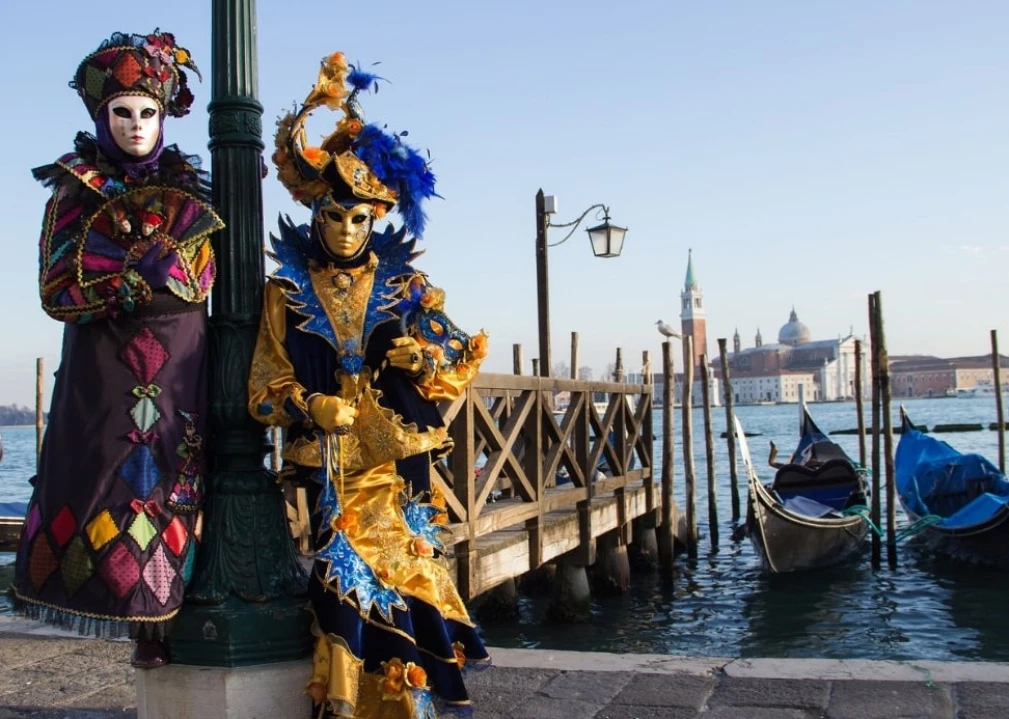The celebration of Carnevale (Carnival) is very important in Italy. Unfortunately with the passing of time, younger generations are losing the meaning of it, but despite everything, it is still a very important celebration, not only for the taste of dressing up but also for the culinary specialties, made of delicious sweets, such as ravioli with cream or chocolate, or chestnuts, the so called chiacchiere, castagnole, tortelli di carne.
The most famous Carnevale celebration in Italy is undoubtedly the Serenissima in Venice, which welcomes thousands of visitors every year. This year, the days in which Carnival is celebrated in Venice are from February 12th to March 1st.
In this period, the palaces open their wonderful frescoed halls to welcome great balls, where you can enter with sumptuous clothes and masks and the great squares of the city, first of all that of St. Mark's Square that welcomes the people dressed up with beautiful masks that parade, many children playing with confetti and streamers and many, many visitors.
Where does Carnevale come from? In ancient times, the new year began in March. In order to welcome the new year one had to have a period of great purification. So, the word Carnevale means “without meat”. Before the arrive of the new year linked to the concept of order, there was a period called Saturnalia in which for nine days the cosmic chaos was represented. Anciently this period took place before Christmas, from the 17th to the 23rd of December. Then, with the change of the new calendar in which January and February were added, the meaning of the celebrations fell in February, the last month before the renewal of Nature and therefore of a new year.
In this week, all was to be confusion and reversal: gambling, wild dances, exaggerated food and sex reigned, while social roles were reversed, slaves could mock their masters and even be served at the table. They exchanged gifts for children, especially wax candles and terracotta puppets, called sigillaria. The prince of the feast was elected and mocked. The cheerful chaos of that period of the year represented the memory of a mythical time, that of the golden age, during which Saturn would have reigned, the Italic king par excellence, who was then identified by the Greeks as the god Kronos, the god of the origin.
Another feast from which Carnevale originates is the procession of the Greek God Dionysus. The chariot of Dionysus is the reason why in many Italian cities the Carnival chariots are still represented. In the great processions dedicated to Dionysus, his statue was carried on a large wagon and went around the villages with a wandering company of masked actors and theater tools to stage the tragic choruses, which are a representation of the god.
Venice has therefore reinterpreted the ancient Greek and Roman festivals to meet the needs of the Serenissima, which promoted the Carnevale to give the population, especially the lower classes, a period dedicated to fun and transgression. In the Carnival of Venice the masks guaranteed total anonymity, a sort of leveling of social divisions that, at times, even allowed the citizens to be publicly mocked by the authorities and the aristocracy. These behaviors represented an outlet for tensions and discontent that were created in society due to the strict limits imposed by the morality and public order of the Republic of Venice.
With the fall of the Serenissima in 1797 at the hands of Napoleon who destroyed many Venetian traditions, came the definitive prohibition of Carnival costumes, with the exception of private parties in Venetian palaces and the Ballo della Cavalchina, at the Teatro La Fenice.
Only in 1967 parties with parades of masks and costumes were organized again, bringing back to life the history and traditions of the Carnival of Venice ... which still continue.




